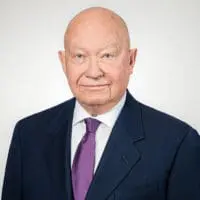Product Liability Update
How Do You Prove Juror Misconduct After a Trial?
The United States Supreme Court recently provided an example of how not to prove voir dire misconduct in a post-trial motion, in Warger v. Shauers. Gregory Warger was injured when his motorcycle collided with Randy Shauers’ truck. Warger sued Shauers for negligence in the United States District Court for the District of South Dakota, the case went to trial, and Warger lost.
After the verdict, one of the jurors disclosed to Warger’s counsel that another juror had spoken during deliberations about “a motor vehicle collision in which her daughter was at fault for the collision and a man died,” and had “related that if her daughter has been sued, it would have ruined her life.” This “saboteur juror” had said in voir dire that she could be a fair and impartial juror, but that clearly was not the case, based on her own close personal history. The “tattletale juror” signed an affidavit explaining the “saboteur juror’s” statements during deliberations, and Warger’s counsel brought a post-trial motion for a new trial, relying on the affidavit. The district court ruled that the affidavit was barred from introduction into evidence by Federal Rule of Evidence 606(b), which states:
During an inquiry into the validity of a verdict or indictment, a juror may not testify about any statement made or incident that occurred during the jury’s deliberations; the effect of anything on that juror’s or another juror’s vote; or any juror’s mental processes concerning the verdict or indictment. The court may not receive a juror’s affidavit or evidence of a juror’s statement on these matters.
At the Supreme Court, Warger argued that the “extraneous information” exception applied to the “tattletale juror’s” affidavit. Because the “saboteur juror” should not have been on the jury in the first place, everything she said during deliberations was arguably “extraneous.” The Supreme Court agreed the affidavit should not have been received or considered. The Court reasoned that a strict interpretation of the rule discourages jury tampering and promotes the finality of verdicts, as Congress intended. It clarified that “extraneous information” is information that is “external” to the jury. “External” information includes publicity and information regarding the case, whereas “internal” information includes the general body of experiences that jurors bring with them to deliberations.
How can juror misconduct during voir dire or during deliberations be proved when it’s discovered after trial? The Supreme Court offered some guidance, instructing that juror impartiality is sufficiently protected by: (a) the ability to raise the issue before the verdict is read; and (b) through the introduction of “non-juror” evidence. The Court didn’t elaborate on how “non-juror” evidence could be used to demonstrate misconduct during cloistered jury deliberations, but F.R.E. 606(b) does not prohibit the testimony of bailiffs, or other members of the court staff or judge, who may have information about misconduct. F.R.E. 606(b) also does not prohibit the testimony of outside people who are contacted by jurors, though this may also present hearsay problems.
It may also be possible to work around the edges of the rule to get in juror testimony regarding misconduct. Most courts will instruct the jury not to discuss the case with their fellow jurors until evidence and arguments are complete, and “deliberations” begin formally. So, if the juror discloses bias, or voir dire misconduct, at some point before deliberations have officially commenced, juror testimony on that subject may not be precluded.
External influences on the jury fit within the well-established “extraneous information” exception to F.R.E. 606(b). Careful thought should be given to the form of the evidence that is presented in post-trial motion. For instance, had Warger’s counsel obtained an affidavit from the “saboteur juror’s” daughter explaining that her life would have been ruined if she were sued as a result of the car incident, the district court may have been able to consider that evidence. At the least, it likely would not have been barred by F.R.E. 606(b), though it might bring up other evidentiary issues. Careful consideration may make it possible to work around F.R.E. 606(b).













